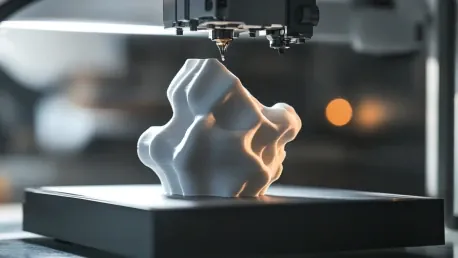In a world where technological advancements are rapidly shaping industries, 3D printing stands out as a transformational force, particularly in the electronics sector. The utilization of additive manufacturing in electronics propels the industry towards unparalleled efficiencies by allowing developers to create prototypes of electronics housings and printed circuit boards (PCBs) swiftly and with minimal material waste. This revolutionary approach not only accelerates the development process but also unlocks new design possibilities by merging different materials in one seamless printing process. As these technologies continue to evolve, the myriad ways in which 3D printing influences the electronics industry become increasingly evident.
Accelerating Prototyping and Development
Additive manufacturing, commonly referred to as 3D printing, significantly streamlines both the development and production phases within the electronics sector. The capability to combine multiple materials within a single print stands out as one of the most remarkable benefits, as it drastically reduces the time needed for prototyping. As 3D printing technologies advance and become more user-friendly, the prototyping phase in product development is witnessing a marked increase in speed. By incorporating digital manufacturing platforms like Xometry, supply chains for electronic components are ripe for transformation through on-demand production. These platforms efficiently match client orders with appropriate producers, emphasizing fixed delivery times and cost reductions.
In the realm of electronics housings and PCBs, 3D printing has introduced a higher degree of innovation. Developers are no longer confined to standard hardware designs, empowering them to create more inventive and efficient solutions. Advanced technologies such as Selective Laser Sintering (SLS) and Multi Jet Fusion (MJF) support the production of complex structures and enable mass production. These methods surpass traditional manufacturing techniques by facilitating the rapid production of large quantities of electronic enclosures and circuit boards, thereby meeting the demands of a fast-paced industry.
Enhancing Design Flexibility and Performance
One of the most compelling examples of 3D printing’s impact in electronics is seen in the production of solar module components. By allowing deviation from traditional design rules, 3D printing leads to improved performance, reduced size and weight, and the creation of intricate and precise geometries. Unlike conventional methods, additive manufacturing enables the direct integration of circuits into components, encapsulating and protecting them from external damage. This encapsulation not only enhances durability and functionality but also underscores the advanced capabilities of 3D printing, as demonstrated by the integration of a small mobile phone antenna printed directly into the device.
Furthermore, 3D printing facilitates the production of circuit boards on non-flat surfaces, vastly expanding the potential for innovative applications in wearables, flexible sensors, glucose testing strips, prosthetics, and customizable batteries. These custom-made devices often outperform conventional ones due to their size and shape being specifically tailored to meet product requirements, thus significantly boosting performance. The ability to create bespoke designs aligns perfectly with the growing market demand for personalized and high-performance electronic devices.
Cost-Effective and Efficient Prototyping Methods
When it comes to prototype development, several additive manufacturing methods prove advantageous due to their flexibility and swift production capabilities. Multi-Jet Fusion (MJF) is a cost-effective option frequently employed for this purpose. Fused Deposition Modeling (FDM) is another accessible and economical method suited for prototyping due to its user-friendly nature and cost-reducing characteristics. This efficiency not only accelerates the redesign and analysis cycles but also facilitates a more dynamic approach to innovation. Digital platforms like Xometry utilize algorithms and artificial intelligence to connect clients with manufacturers expeditiously, thereby significantly shortening the innovation cycle.
For applications demanding high precision and quality, Stereolithography (SLA) and Carbon Digital Light Synthesis (DLS) are ideal choices. These processes make use of liquid plastics and offer superior surface quality, flexibility, and water resistance, making them particularly well-suited for modern electronic applications. They are especially beneficial for producing high-resolution prototypes and functional models that require strict tolerance parameters. The combination of high precision and efficient production timelines makes these methods indispensable in the competitive electronics market.
Reducing Waste and Simplifying Production
In our rapidly evolving world, technological advancements are significantly transforming various industries, and 3D printing is a standout, especially in the electronics sector. The adoption of additive manufacturing in electronics leads the industry toward unmatched efficiencies by enabling developers to quickly create prototypes of electronic housings and printed circuit boards (PCBs) with minimal material waste. This innovative method not only hastens the development process but also opens up new design possibilities by integrating different materials seamlessly in a single printing process. As these technologies continue to progress, the varied ways in which 3D printing is revolutionizing the electronics industry become more and more apparent. This breakthrough allows for faster iterations, reduces costs, and enhances the capability to produce more complex and customized electronic components. With the potential to streamline production and foster innovative designs, 3D printing is poised to reshape the future of electronics, providing a glimpse into a world where customization and efficiency are paramount.









